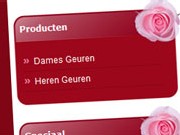 |
| Illustration taken from Wikimedia |
Combined words, a very interesting topic. Unlike in English, the Dutch language requires that combined words are written as one word. It is a very common mistake, also amongst native speakers. It occurs so frequently that in 2004, people have built a website that collects examples of this kind of mistakes.
 |
| Illustration taken from SOS |
A good example is a website that promotes perfumes. You can choose between "scents for ladies" and "scents for gentlemen". In Dutch, this should be: "damesgeuren" and "herengeuren", both written as one word as it is a combination of the words "ladies" and "scents". Unfortunately, the website has put a separation between both parts of the combined word, not realising that "dames geuren" can be read as if 'geuren' is a verb, changing the meaning to "ladies smell (bad)" and "gentlemen smell (bad)".
Not really the image that you would expect from perfumesellers, this smells...
So for all these words that exist out of a combination of two other words: write them as one. For example:
| parts | combined word | English |
|---|---|---|
| melk + fles | de melkfles | the milk bottle |
| lees (lezen) + plezier | leesplezier | "happy reading" |
| hoog + snelheid + lijn | hogesnelheidslijn | high-speed line |
| keuken + benodigdheden | keukenbenodigdheden | kitchen utensils |
| winkel + wagentje | winkelwagentje | shopping cart |
| kaas + winkel | kaaswinkel | cheese shop |
And many, many others.
As "melkfles" is taken from the combination of "melk" and "fles", making "melkfles" a type of "fles": "melkfles" has to be written as one word, unlike in English.
- Wat voor soort fles?
- Een melkfles.
- Hoeveel melkflessen heb jij?
- Ik heb 23 melkflessen.
Easy, isn't it? Now, I guess that most non-visually impaired readers have noticed the extra 's' within the word "hogesnelheidslijn". This is one of the horrors within the Dutch language. I will elaborate on that one in one of the future posts.
No comments:
Post a Comment